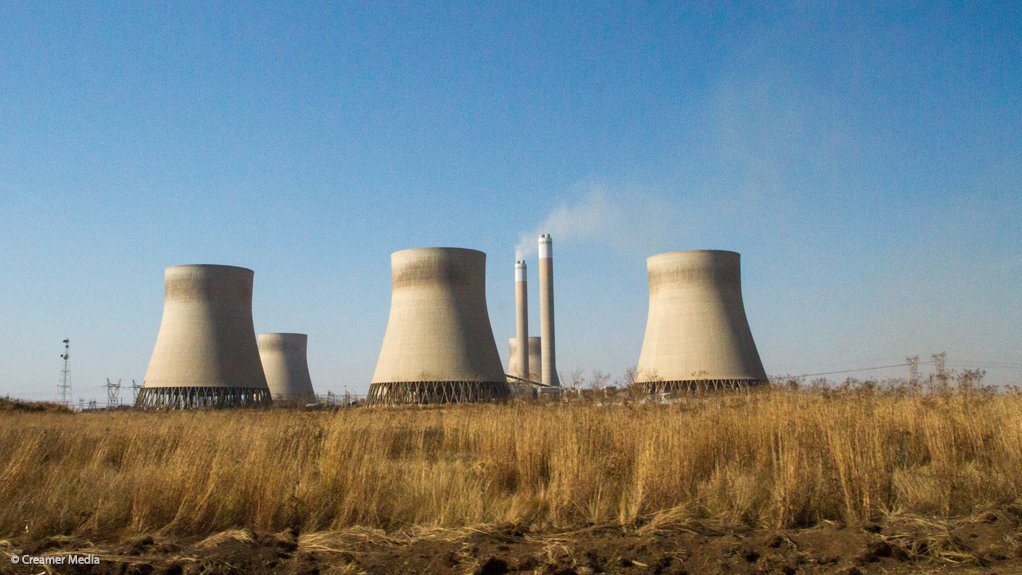Eskom aims to keep breakdowns below 14 GW this winter as it cuts diesel budget


Eskom to ramp down planned maintenance to 3 000 MW in winter
Photo by Creamer Media
State-owned electricity utility Eskom will reduce planned maintenance to 3 000 MW during the upcoming winter season and will seek to keep unplanned breakdowns to below 14 000 MW in a bid to navigate the high-demand period with limited loadshedding.
During the summer period, from September to the end of March, the utility set a target of restricting unplanned breakdowns to 14 500 MW during the high-maintenance summer months, when average planned maintenance levels of 7 000 MW were targeted.
During those periods when breakdowns exceeded the target, loadshedding was typically implemented, at times at high levels of intensity of between Stage 4 and 6.
While the winter outlook was still being finalised, Eskom Generation’s Eric Shunmagum confirmed during a briefing on the implementation of the Energy Action Plan that it should be released later this month.
He also confirmed that the diesel budget for the 2024/25 financial year would be below the R30-billion set aside for the operation of the Eskom and independent power producer open-cycle gas turbines in 2023/24; a budget that he confirmed had been marginally exceeded, without providing specifics.
The diesel budget for the current financial year, meanwhile, would be communicated at a future briefing.
Speaking amid a sustained period during which Eskom had not resorted to loadshedding, Shunmagum stressed that the winter plan, as with previous plans, would contain three scenarios, with the base scenario likely to indicate only limited loadshedding for the period from April to the end of August.
He also insisted that Eskom Generation would work to ensure that breakdowns were kept below the 14 000 MW level to further reduce the threat of loadshedding.
However, the coal fleet remained unreliable with intense recovery work still under way at six priority stations, including Majuba, Matla, Duvha, Kendal, Tutuka and Kriel, which had replaced Kusile on the list after Kusile’s performance was deemed to have recovered following the introduction of temporary stacks.
EAF TARGET MISSED
Meanwhile, Electricity Minister Kgosientsho Ramokgopa confirmed that the Eskom fleet failed to achieve the 65% energy availability factor (EAF) target set by the board for the end of March, coming in at only 54.6%. The performance was even below the 56% EAF reported by Eskom in its previous financial year.
Nevertheless, Shunmagum described the target as non-negotiable and insisted that the 65% to 70% target remained intact for the current financial year.
Ramokgopa attributed the failure to achieve the EAF target to “aggressive planned maintenance” efforts, which he said were prioritised ahead of lifting the EAF to closer to 60%.
“Planned maintenance increased from 9.3% in FY2023 to 12.0% in FY2024 reinforcing the commitment to execute the recovery plans and reduce plant risks,” he said.
The Minister also insisted that various additional capacity was scheduled to be added or returned to service over the coming five months, including: Medupi Unit 4 in August, where a second-hand generator was being installed after a unit was crippled by a fire incident in August 2021; Koeberg Unit 2, which is currently scheduled to return from an extended outage in September; and Kusile Unit 6, which is also currently scheduled to be synchronised to the grid in September.
“In the next five months, we should be able to get 2 583 MW of new generation capacity [from Eskom],” Ramokgopa said.
He also played down concerns that up to 2 100 MW of Kusile capacity would be unavailable from November, when the three units that are currently bypassing the flue-gas desulphurisation (FGD) plant using temporary stacks, were scheduled to start being reconnected to the FDG through the west stack.
The west stack was rendered inoperable when Kusile’s Unit 1 flue duct collapsed because of an uncontrolled build-up of slurry on October 23, 2022, affecting units 1, 2 and 3 that share a common stack.
Eskom, he said, would implement the permanent solution in phases from October until the end of April. No final cost estimate has been provided for the permanent fix, with the temporary solution having cost R600-million to implement.
Article Enquiry
Email Article
Save Article
Feedback
To advertise email advertising@creamermedia.co.za or click here
Comments
Press Office
Announcements
What's On
Subscribe to improve your user experience...
Option 1 (equivalent of R125 a month):
Receive a weekly copy of Creamer Media's Engineering News & Mining Weekly magazine
(print copy for those in South Africa and e-magazine for those outside of South Africa)
Receive daily email newsletters
Access to full search results
Access archive of magazine back copies
Access to Projects in Progress
Access to ONE Research Report of your choice in PDF format
Option 2 (equivalent of R375 a month):
All benefits from Option 1
PLUS
Access to Creamer Media's Research Channel Africa for ALL Research Reports, in PDF format, on various industrial and mining sectors
including Electricity; Water; Energy Transition; Hydrogen; Roads, Rail and Ports; Coal; Gold; Platinum; Battery Metals; etc.
Already a subscriber?
Forgotten your password?
Receive weekly copy of Creamer Media's Engineering News & Mining Weekly magazine (print copy for those in South Africa and e-magazine for those outside of South Africa)
➕
Recieve daily email newsletters
➕
Access to full search results
➕
Access archive of magazine back copies
➕
Access to Projects in Progress
➕
Access to ONE Research Report of your choice in PDF format
RESEARCH CHANNEL AFRICA
R4500 (equivalent of R375 a month)
SUBSCRIBEAll benefits from Option 1
➕
Access to Creamer Media's Research Channel Africa for ALL Research Reports on various industrial and mining sectors, in PDF format, including on:
Electricity
➕
Water
➕
Energy Transition
➕
Hydrogen
➕
Roads, Rail and Ports
➕
Coal
➕
Gold
➕
Platinum
➕
Battery Metals
➕
etc.
Receive all benefits from Option 1 or Option 2 delivered to numerous people at your company
➕
Multiple User names and Passwords for simultaneous log-ins
➕
Intranet integration access to all in your organisation















